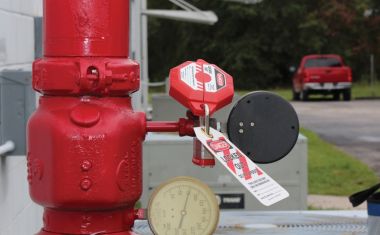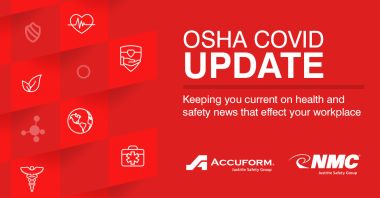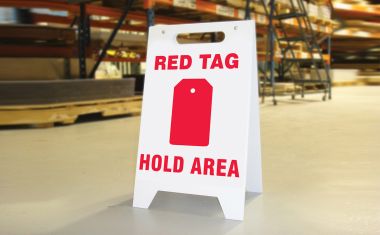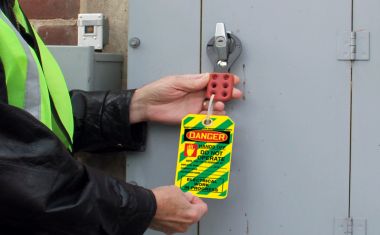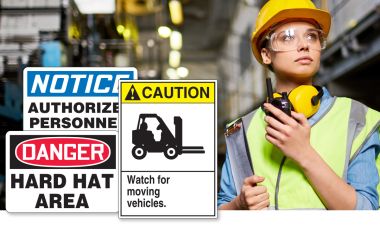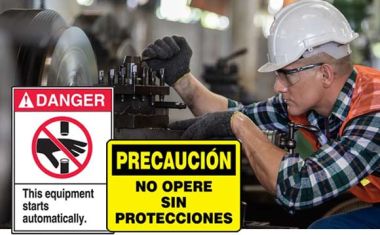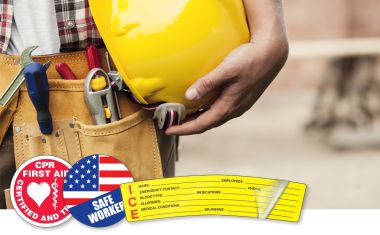OSHA's Final Rule to Protect Workers from Exposure to Respirable Crystalline Silica
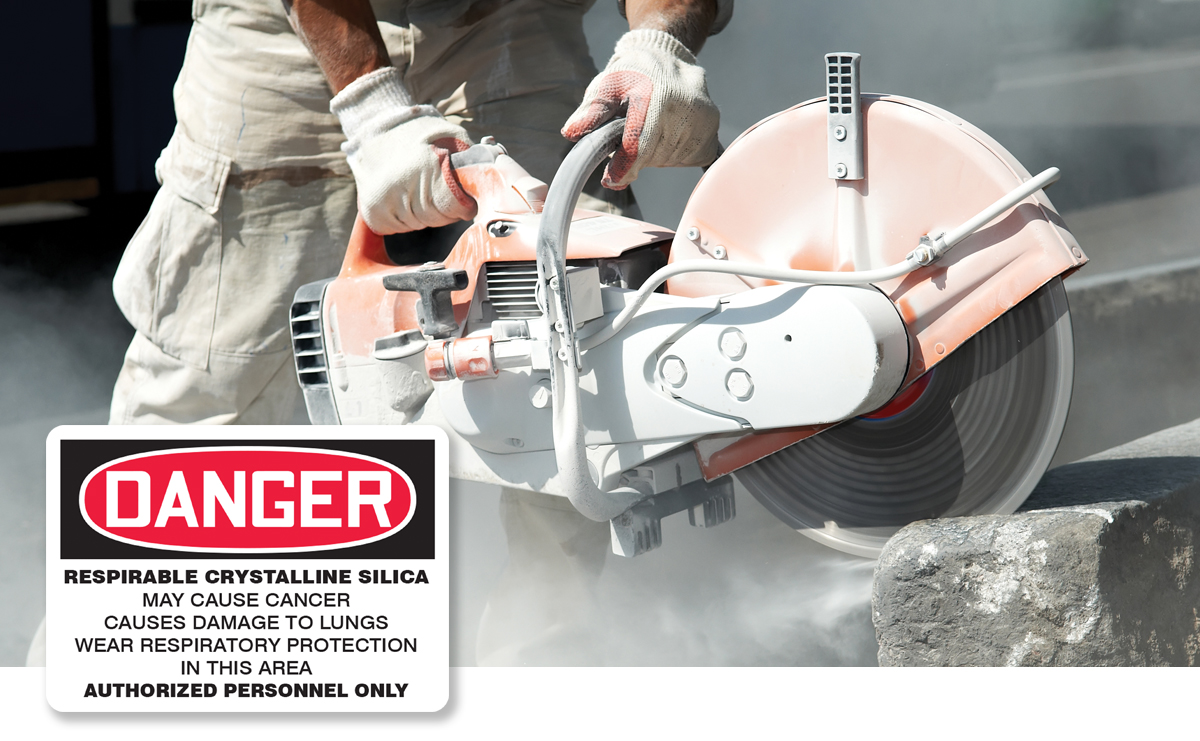
The dust won't settle until all industries are compliant with the new silica standard!
The Occupational Safety and Health Administration (OSHA) has issued a final rule to curb lung cancer, silicosis, chronic obstructive pulmonary disease and kidney disease in America's workers by limiting their exposure to respirable crystalline silica. The rule is comprised of two standards, one for Construction and one for General Industry and Maritime.
Of all the workers exposed to silica, 2 million of them are construction workers. OSHA's new rule will save nearly 600 lives and prevent more than 900 new cases of silicosis each year.
What industries will be affected by the silica rule?
Below is a list of some of the main industries affected by silica:
- Construction
- Abrasive blasting in:
- Maritime work
- Construction
- General industry
- Glass manufacturing
- Concrete products
- Landscaping
- Read-mix concrete
- Cut stone and stone products
- Asphalt products manufactuirng
- Railroads
Key Provisions
- Reduces the permissible exposure limit (PEL) for respirable crystalline silica to 50 micrograms per cubic meter of air, averaged over an 8-hour shift.
- Requires employers to: use engineering controls (such as water or ventilation) to limit worker exposure to the PEL; provide respirators when engineering controls cannot adequately limit exposure; limit worker access to high exposure areas; develop a written exposure control plan, offer medical exams to highly exposed workers, and train workers on silica risks and how to limit exposures.
- Provides medical exams to monitor highly exposed workers and gives them information about their lung health.
- Provides flexibility to help employers — especially small businesses — protect workers from silica exposure.
Remaining Compliance Schedules
The construction industry is already required to meet all obligations (except methods of sample analysis) according to the OSHA silica standard - as of September 23, 2017. Employers are required to comply with the methods of sample analysis by June 23, 2018. Both standards contained in the final rule took effect on June 23, 2016, after which industries have one to five years to comply with most requirements, based on the schedule below.
General Industry and Maritime - June 23, 2018, two years after the effective date.
For all operations in general industry and maritime, other than hydraulic fracturing operations in the oil and gas industry, employers must comply with:
- All obligations of the standard, with the exception of the action level trigger for medical surveillance, by June 23, 2018.
- Employers are required to offer medical examinations to employees exposed above the PEL for 30 or more days a year beginning on June 23, 2018.
- Employers are required to offer medical examinations to employees exposed at or above the action level for 30 or more days a year beginning on June 23, 2020.
Hydraulic Fracturing - June 23, 2018, two years after the effective date for all provisions except Engineering Controls, which have a compliance date of June 23, 2021.
- Employers are required to comply with all obligations of the standard, except for engineering controls and the action level trigger for medical surveillance, by June 23, 2018.
- Employers are required to comply with requirements for engineering controls to limit exposures to the new PEL by June 23, 2021. From June 23, 2018 through June 23, 2021, employers can continue to have employees wear respirators is their exposures exceed the PEL.
- Employers are required to offer medical examinations to employees exposed above the PEL for 30 days or more days beginning on June 23, 2018.
- Employers are required to offer medical examinations to employees exposed at or above the action level for 30 or more days a year beginning on June 23, 2020.
Shop AccuformNMC Solutions Here
Per OSHA, as the employer, you are required to post signs at all entrances to regulate areas that bear the following legend: DANGER RESPIRABLE CRYSTALLINE SILICA MAY CAUSE CANCER CAUSES DAMAGE TO LUNGS WEAR RESPIRATORY PROTECTION IN THIS AREA AUTHORIZED PERSONNEL ONLY
Please note: While the non-regulated worded products are available, they’re really considered now as ‘supplemental’ signs.
Resources:
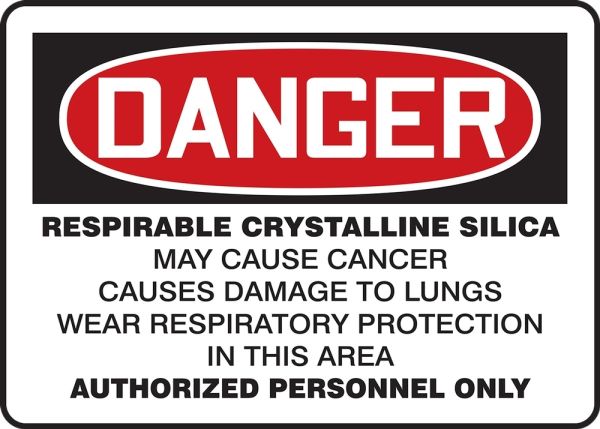
*Remind your workers to wear respiratory protection when working with silica.
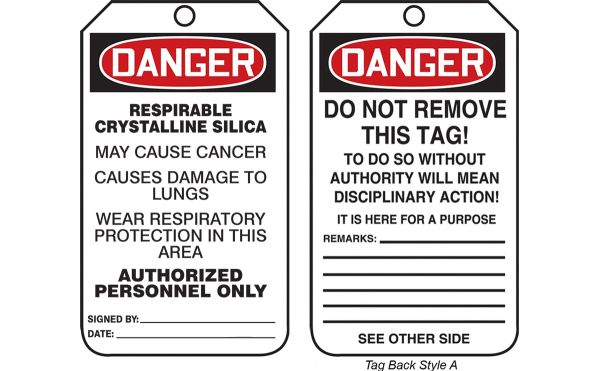
Ensure all employees are well-aware of the seriousness of silica dust and understand the required PPE to wear in specific areas.
